Origin Of Pumpkin: Where Did İt All Start?
Pumpkins are often associated with Halloween and fall, but there is much more to these round, orange fruits than meets the eye. The pumpkin has an interesting history that dates back thousands of years. In fact, the origin of pumpkin can be traced back to Central America, where it was first cultivated over 7,500 years ago.
The ancient people of Central America, particularly the Mayans and Aztecs, were among the first to grow and use pumpkins. They used every part of the pumpkin, including the flesh, seeds, and even the shells as containers. They also believed that pumpkins had spiritual properties and incorporated them into their religious ceremonies.
When the Spanish explored Central America in the 1500s, they discovered the pumpkin and brought it back to Europe. The pumpkin quickly became popular in Europe, where it was used in a variety of dishes, including soups, stews, and pies.
As European settlers made their way to North America in the 1600s, they brought the pumpkin with them. Native Americans quickly adopted the pumpkin and began using it in their own cooking. It wasn’t until the 1800s that pumpkins really began to take off in North America as a staple of fall cuisine and decoration.
- Today, pumpkins are grown all over the world and are used in a wide range of culinary dishes, as well as for decoration during the fall months.
- The pumpkin’s popularity continues to grow as more people discover its many health benefits, including its high fiber content and abundance of vitamins and minerals.
| Nutritional Content of Pumpkin | Amount per 1 cup cooked pumpkin |
|---|---|
| Calories | 49 |
| Carbohydrates | 12g |
| Fiber | 3g |
| Protein | 2g |
In conclusion, the pumpkin has a rich history that spans thousands of years and multiple continents. From its early roots in Central America to its popularity in Europe and North America, the pumpkin has become an integral part of a variety of culinary and decorative traditions. Today, the pumpkin continues to be celebrated for its many health benefits, and is sure to remain a popular fruit for years to come.
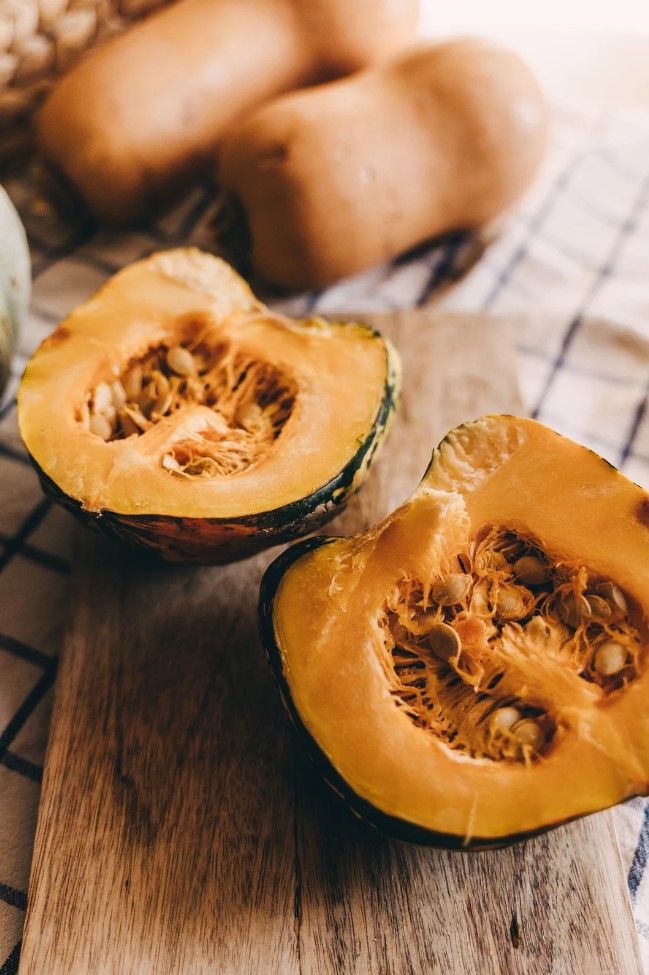
Nutritional Benefits Of Pumpkin: What’s İn This Famous Fruit?
When we think of pumpkin, the first thing that comes to our mind is pumpkin pie or carving it during Halloween. What most people aren’t aware of is the numerous nutritional benefits that pumpkin has to offer.
For starters, pumpkins are incredibly low in calories, with a cup of pumpkin puree containing only 49 calories. Additionally, they are rich in fiber and low in fat, making it an ideal food for those who are looking to lose weight or maintain a healthy weight.
The bright orange color of pumpkins is due to the presence of beta-carotene, a powerful antioxidant that is converted into vitamin A in the body. Just one cup of pumpkin provides more than 200% of the recommended daily intake of vitamin A, which is essential for good vision and a healthy immune system.
Pumpkins are also a good source of vitamin C, which helps to boost the immune system and protect against various diseases. Furthermore, they contain potassium, which is important for maintaining healthy blood pressure and reducing the risk of heart disease.
- Increase nutrient intake by adding pumpkin to smoothies or soups.
- Roast pumpkin seeds for a delicious and healthy snack.
- Replace butter or oil in recipes with pumpkin puree for a healthier alternative.
| Nutrient | Amount per 1 cup (cooked) |
|---|---|
| Calories | 49 |
| Fiber | 3 grams |
| Vitamin A | 245% of the RDI |
| Vitamin C | 19% of the RDI |
| Potassium | 564 milligrams |
In conclusion, pumpkin is not only a delicious and versatile food, but it also offers numerous nutritional benefits that can contribute to better health. So the next time you’re thinking about indulging in a pumpkin spice latte, consider incorporating pumpkin into your diet in other ways to reap the health benefits it has to offer.
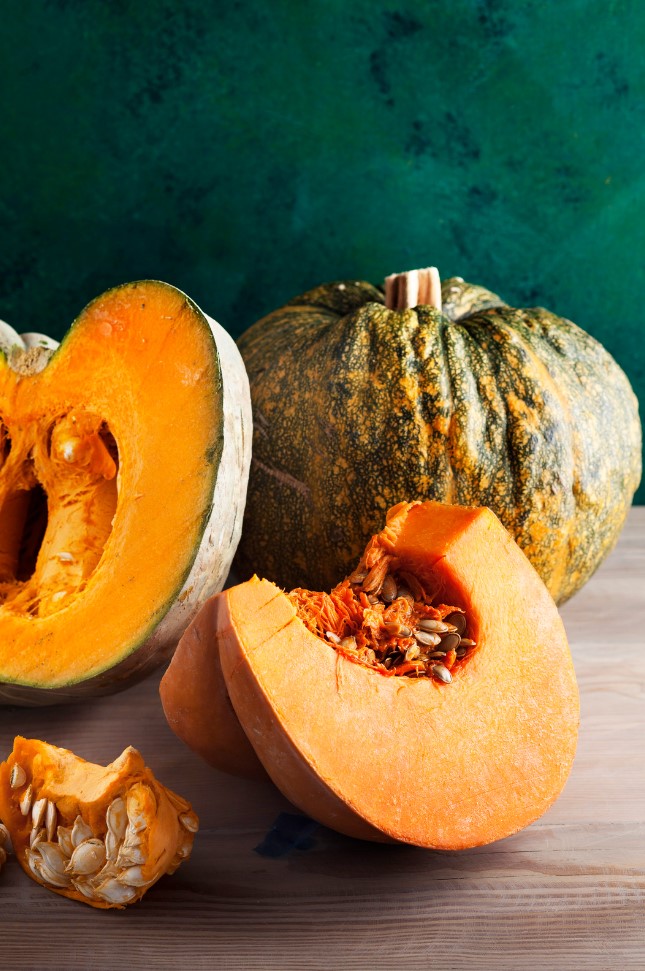
Pumpkin For Weight Loss: Can İt Help You Lose Weight?
Pumpkins have long been a staple in fall festivities, but did you know that they may also aid in weight loss? Yes, you heard it right – pumpkins can potentially help you shed some pounds. Here are some things that you need to know about pumpkin and its weight loss benefits.
- Pumpkins are low in calories Pumpkins are a great addition to your diet if you’re trying to lose weight because they are low in calories. Half a cup of canned pumpkin puree has only around 50 calories.
- Pumpkins are high in fiber Fiber is an essential nutrient when it comes to losing weight. It helps you stay full for longer periods, which means you’ll be less likely to overeat. Pumpkins are a good source of fiber, with around 3 grams per half-cup of canned pumpkin puree.
- Pumpkins are a good source of vitamins and minerals While pumpkins may not be packed with all the vitamins and minerals that you need, they are still a good source of some essential nutrients. For instance, pumpkin is an excellent source of vitamin A, which supports healthy vision and skin.
It’s also worth noting that pumpkin seeds contain healthy fats and proteins, which can also help you feel fuller for longer periods.
All in all, while there is no magic weight loss food, adding pumpkins to your diet can certainly be beneficial. Do note that it’s all about moderation – eating too much of anything, even if it’s healthy, can still lead to weight gain. But, incorporating pumpkins into your meals will definitely be a step in the right direction. So, go ahead and make pumpkin soup, pumpkin smoothies, or roasted pumpkin – the possibilities are endless!
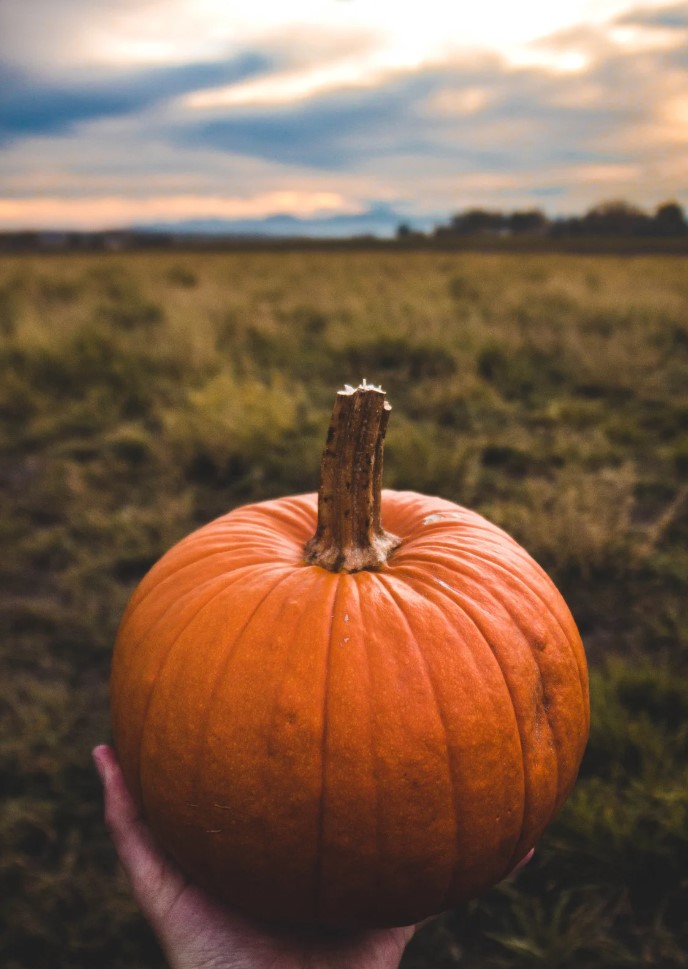
Boosting İmmunity With Pumpkin: How Does İt Work?
Did you know that pumpkin can boost your immune system? That’s right! This delicious fall fruit contains a variety of vitamins and minerals that can help your body fight off infections and illnesses. Let’s take a closer look at how pumpkin can boost your immunity.
-
Pumpkin is loaded with vitamin A.
-
It also contains vitamin C and vitamin E.
-
Pumpkin is rich in beta-carotene, which is converted into vitamin A in your body.
-
The antioxidants in pumpkin can help protect your body from harmful free radicals.
Thanks to these nutrients, eating pumpkin can help increase the production of white blood cells, which play a critical role in fighting off viruses and bacteria. In fact, some research suggests that the beta-carotene in pumpkin may help reduce the risk of developing certain types of cancer, such as lung and prostate cancer.
In addition to boosting your immune system, pumpkin can also help support your overall health. Its high fiber content can aid in digestion and promote regularity. Plus, the potassium in pumpkin can help regulate blood pressure and support heart health.
| Vitamin/Mineral | Amount per 1 cup of cooked pumpkin |
|---|---|
| Vitamin A | 245% of the daily value |
| Vitamin C | 19% of the daily value |
| Vitamin E | 10% of the daily value |
| Potassium | 16% of the daily value |
If you want to add more pumpkin to your diet, try incorporating it into soups, stews, smoothies, or baked goods. You can even roast pumpkin seeds for a healthy snack. Just be sure to avoid canned pumpkin that contains added sugars or preservatives.
So, there you have it – pumpkin can help boost your immune system and support your overall health. What’s not to love about this delicious, versatile fruit?
Pumpkin For Healthy Vision: Is İt Effective?
Pumpkin is a famous fruit that is widely recognized for its health benefits. Not only is it great for weight loss, but it also contains properties that promote a healthy immune system and vision. When it comes to healthy vision, pumpkin is one of the best fruits you can consume. It is loaded with vitamins and antioxidants that are essential for maintaining strong and healthy eyesight.
One of the most important nutrients found in pumpkin for healthy vision is vitamin A. This vitamin is essential for maintaining good eyesight and helps prevent age-related macular degeneration, a common cause of vision loss in elderly adults. Additionally, pumpkin is rich in other vital nutrients such as vitamin C and E, which are potent antioxidants that protect the eyes from damage caused by free radicals.
- One cup of cooked pumpkin contains approximately:
- 245% of your daily vitamin A requirement
- 19% of your daily vitamin C requirement
- 10% of your daily vitamin E requirement
In addition to vitamins, pumpkin also contains carotenoids, which are pigments that give the fruit their bright orange color. One of the most abundant carotenoids found in pumpkin is beta-carotene, which your body converts into vitamin A. Consuming foods rich in beta-carotene has been linked to a reduced risk of cataracts and other eye-related problems.
As you can see, pumpkin is an excellent food for promoting healthy vision. Incorporating this fruit into your diet can help prevent vision loss and improve overall eye health. So, next time you’re at the grocery store, consider picking up some pumpkin for a healthy snack or ingredient in your next meal.
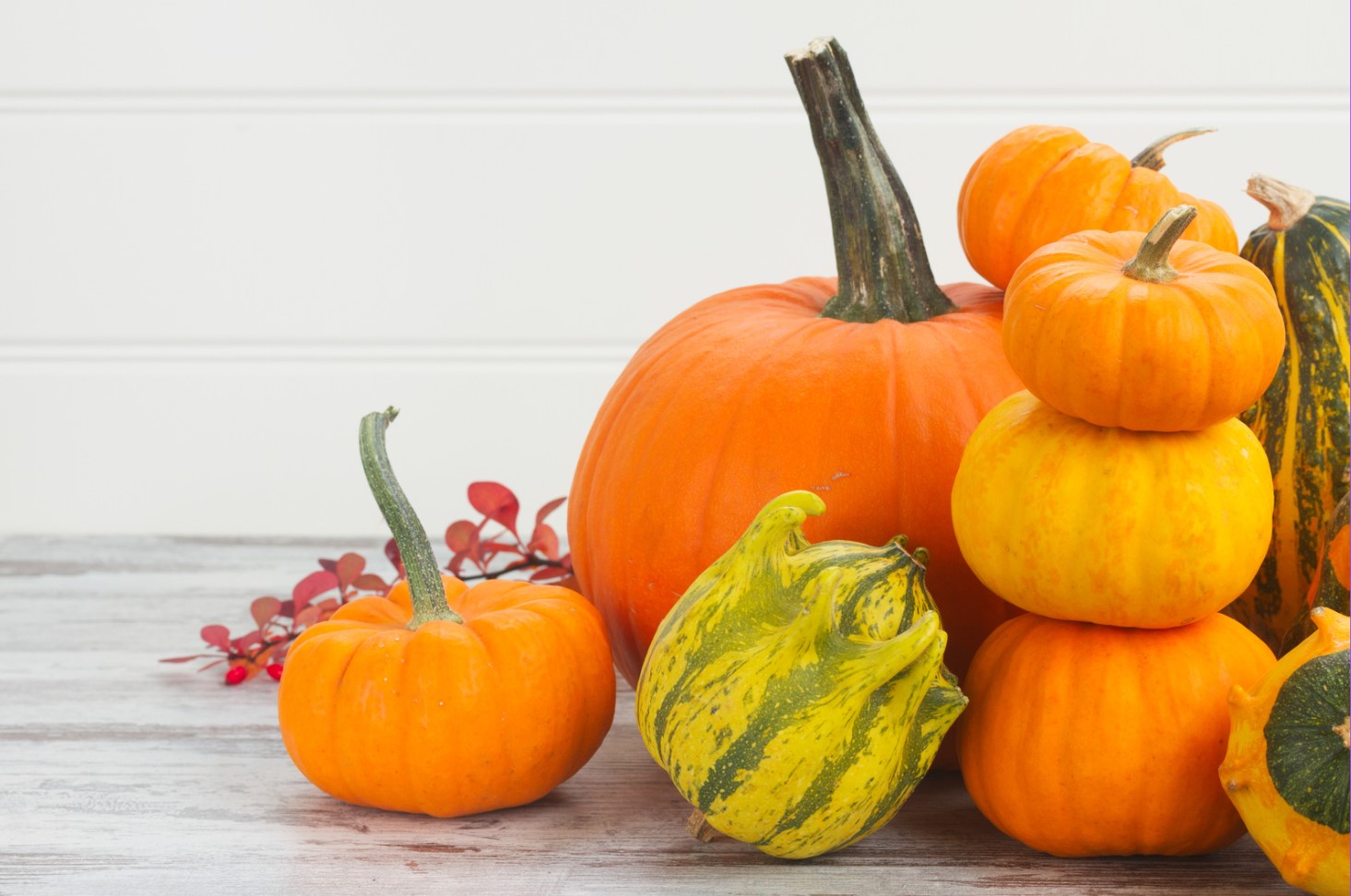
Pumpkin For Healthy Skin: How To Use İt For Clear Skin?
Pumpkin is a well-known fall fruit that is typically associated with pumpkin pies and other baked delights. Did you know, however, that pumpkin can also do wonders for your skin? This humble fruit is packed with vitamins and minerals that can help improve the appearance and health of your skin.
One of the major benefits of pumpkin for skin is its high vitamin C content. This essential vitamin helps to promote collagen production, which in turn can help reduce fine lines and wrinkles. Vitamin E, another important antioxidant found in pumpkin, can also help protect skin from damage caused by free radicals.
- But how can you actually use pumpkin for skin care?
- One simple way is to incorporate pumpkin puree into a homemade face mask.
To make a pumpkin mask, start by mixing one tablespoon of pumpkin puree with one tablespoon of honey. Add a teaspoon of olive oil and mix well. Apply the mixture to your face and leave on for 10-15 minutes before rinsing off with warm water.
- Another option is to use pumpkin seed oil as a moisturizer.
- This oil is rich in fatty acids, which help nourish and hydrate the skin.
Simply apply a small amount of pumpkin seed oil to your face and neck after cleansing and toning. Massage gently into your skin until fully absorbed.
| Pumpkin Facial Scrub Recipe |
|---|
| Ingredients: |
| 1 cup pumpkin puree |
| 1/4 cup brown sugar |
| 1/4 cup coconut oil |
| 1 tsp cinnamon |
| Directions: |
| Mix all ingredients together in a bowl. |
| Apply to your face and gently massage in a circular motion for a few minutes. |
| Rinse off with warm water. |
Finally, adding pumpkin to your diet can also help promote healthy skin. Pumpkin is rich in beta-carotene, which the body converts into vitamin A. This important vitamin helps to promote cell turnover and can help improve the overall texture and appearance of your skin.
So, the next time you’re picking out a pumpkin for your pie, don’t forget about all the ways this versatile fruit can benefit your skin.
Is Pumpkin A Fruit Or A Vegetable? Let’s Clarify The Confusion
When it comes to whether pumpkin is a fruit or a vegetable, there seems to be some confusion. Many people assume that because it is often used in savory dishes, it must be a vegetable. However, pumpkin is actually a fruit. According to botanists, a fruit is defined as the part of the plant that develops from a flower and contains the seeds.
So, while pumpkin may be used in savory dishes, it still meets the criteria for being a fruit. This means that it belongs to the same category as other fruits like apples, oranges, and bananas. However, unlike many other fruits, pumpkin is not typically eaten raw. Instead, it is often cooked or baked before being eaten.
- So, what are some health benefits of pumpkin as a fruit?
- Firstly, it is a great source of fiber, which can help promote healthy digestion.
- It is also packed with vitamins and minerals, including vitamin A, which is important for eye health, as well as vitamin C and potassium.
- Additionally, the seeds of the pumpkin are a great source of protein and healthy fats.
Despite being a fruit, pumpkin is often used in savory dishes and can be prepared in a variety of ways. It can be roasted, mashed, or used in soups and stews. It is also often used in sweet dishes, such as pumpkin pie or pumpkin bread.
| Pumpkin Nutrition Facts (1 cup, mashed) |
|---|
| Calories: 49 |
| Carbohydrates: 12g |
| Fiber: 2.7g |
| Protein: 2g |
| Fat: 0.2g |
| Vitamin A: 245% of the Daily Value (DV) |
| Vitamin C: 19% of the DV |
| Potassium: 16% of the DV |
In short, while pumpkin may be used in savory dishes, it is still considered a fruit. It is packed with nutrients and can be prepared in a variety of delicious ways. So, whether you prefer it in a pie or a stew, be sure to enjoy the many health benefits that this versatile fruit has to offer!
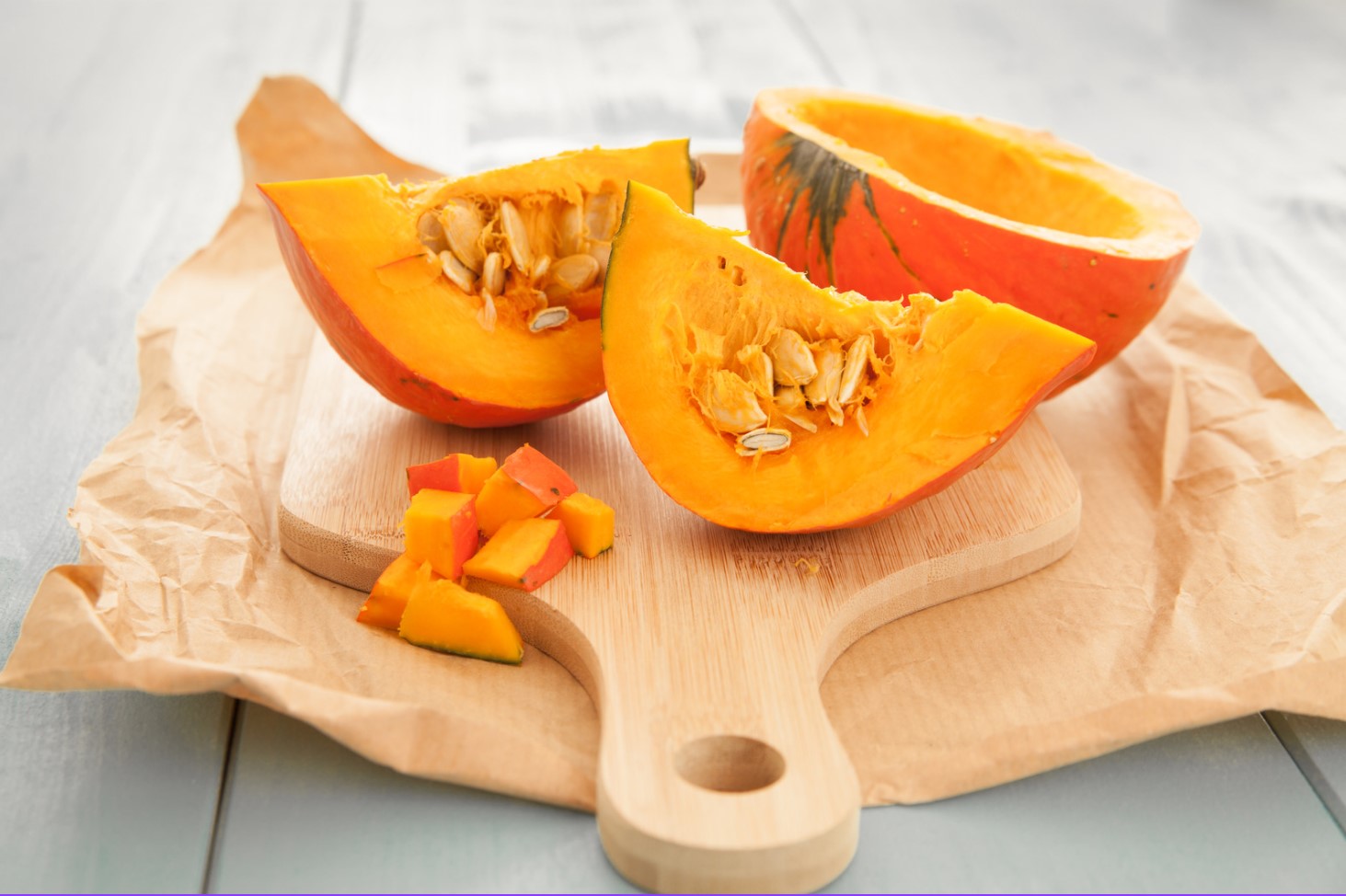
Organic Pumpkin: Why İt’s Worth The Extra Money
Organic pumpkin is becoming increasingly popular for its numerous health benefits. While it may cost more than conventionally grown pumpkin, the extra money spent is worth it in terms of the benefits it provides.
First and foremost, choosing organic pumpkin ensures that it is free from harmful pesticides and chemicals, which can have negative impacts on human health. Conventionally grown pumpkins are often sprayed with pesticides that can leave harmful residues on the skin and in the flesh. Organic farming practices, on the other hand, use natural methods to control pests and diseases, such as crop rotation and the use of beneficial insects, resulting in a healthier and safer product.
- Organic pumpkin is also richer in nutrients than conventionally grown pumpkin. Studies have shown that organic produce has higher levels of vitamins, minerals, and antioxidants. This is because organic farming practices focus on building healthy soil, which in turn produces more nutrient-rich crops.
Beyond the health benefits, choosing organic pumpkin also has positive impacts on the environment. Organic farming practices promote soil health and biodiversity, reduce pollution, and conserve water. Additionally, by supporting organic farming practices, consumers are contributing to a more sustainable and resilient food system.
- When it comes to cooking with organic pumpkin, there are many delicious recipes to try. Roasting pumpkin with spices like cinnamon and cumin makes for a tasty and healthy snack, while pumpkin puree can be used as a base for soups, stews, and baked goods.
- Finally, when purchasing organic pumpkin, it is important to look for certification from a reputable organic certifying agency, such as the USDA or Canada Organic. This ensures that the product has been grown and processed according to strict organic standards.
Overall, while organic pumpkin may cost more than conventionally grown pumpkin, the health and environmental benefits make it a worthwhile investment.
Cooking With Pumpkin: Amazing Recipes To Try
Pumpkins are more than just a decoration for Halloween. They are a delicious and versatile ingredient that can be used in a variety of dishes. From pumpkin soup to roasted pumpkin seeds, there are countless ways to use this fall favorite in your cooking.
One of the best ways to enjoy the flavor of pumpkin is by incorporating it into your baked goods. Pumpkin pie is a classic dessert that many people enjoy during the holiday season, but there are so many other recipes that you can try. Pumpkin bread, muffins, and cake are all delicious options that will satisfy your sweet tooth.
- Pumpkin bread: This recipe is a healthier version of the classic bread that you know and love. Made with whole wheat flour and natural sweeteners like maple syrup, it is a perfect breakfast or snack option.
- Pumpkin muffins: These moist and flavorful muffins are a great option for a fall brunch or afternoon treat. Add in some chopped nuts or chocolate chips for extra flavor and texture.
- Pumpkin cake: If you are looking for a showstopper dessert, this pumpkin cake is just what you need. With layers of moist pumpkin cake and creamy frosting, it is sure to impress your guests.
Aside from baked goods, pumpkin can also be used to add flavor and nutrition to savory dishes. Pumpkin soup is a warm and comforting meal that is perfect for cooler weather. Simply roast or boil the pumpkin and blend it with some broth and spices for a simple and healthy soup.
| Ingredient | Amount |
|---|---|
| Pumpkin | 2 cups, cooked |
| Vegetable broth | 2 cups |
| Onion | 1 medium, diced |
| Garlic | 2 cloves, minced |
| Olive oil | 1 tablespoon |
| Salt | To taste |
| Pepper | To taste |
Another savory dish that you can make with pumpkin is a risotto. The creamy texture of the pumpkin makes it the perfect addition to this classic Italian dish. Simply follow your favorite risotto recipe and stir in some pureed pumpkin towards the end of the cooking process.
As you can see, there are so many different ways to use pumpkin in your cooking. Not only is it delicious, but it is also packed with nutrients like vitamin A and fiber. So next time you are at the grocery store, pick up a pumpkin and try out one of these amazing recipes. Your taste buds will thank you.

Pumpkin And Halloween: The Spookiest History
Halloween is a holiday that is celebrated annually on October 31st. It originated from the ancient Celtic festival of Samhain, where people would light bonfires and wear costumes to ward off ghosts. Over time, Halloween has become a popular holiday in many countries around the world. One of the most iconic symbols of Halloween is the pumpkin, which has an interesting history associated with the holiday.
Pumpkins were originally native to North America, and they were cultivated by the indigenous people for thousands of years. They were a part of their diet and also used for medicinal purposes. When Europeans arrived in America, they discovered the pumpkin and began using it in their own cuisine. The pumpkin was so popular that it eventually became a part of Halloween traditions.
- One of the earliest references to using pumpkins for Halloween can be traced back to Ireland in the 19th century.
- The practice of carving Jack-o’-lanterns from pumpkins originated from an Irish folktale about a man named Jack who tricked the devil.
- When Jack died, he was not allowed into heaven or hell, so he roamed the earth with a carved-out turnip to light his way.
- Irish immigrants brought this tradition to America, where they discovered that pumpkins were easier to carve than turnips.
Today, carving pumpkins is a popular activity during Halloween. People carve different designs into pumpkins, ranging from spooky faces to intricate patterns. Pumpkin carving contests and festivals are held in many parts of the world during Halloween season. Many families also enjoy roasting pumpkin seeds and making pumpkin pies and other treats using the flesh of the pumpkin.
| Some interesting facts about pumpkins: |
|---|
| Pumpkins are technically a fruit, but they are commonly thought of as a vegetable due to their culinary uses. |
| The largest pumpkin ever recorded was grown in Belgium in 2016 and weighed over 2,600 pounds. |
| Pumpkin seeds are a rich source of protein, minerals, and vitamins. |
| Pumpkin spice, a popular flavor during autumn, typically contains a blend of cinnamon, nutmeg, ginger, allspice, and cloves. |
In conclusion, pumpkins have a rich history that is closely tied to Halloween. From their origins in North America to their incorporation into Halloween traditions, pumpkins continue to be an important part of the holiday season. Whether you are carving them into elaborate designs or using them to make tasty treats, pumpkins add a touch of spookiness and fun to Halloween celebrations around the world.
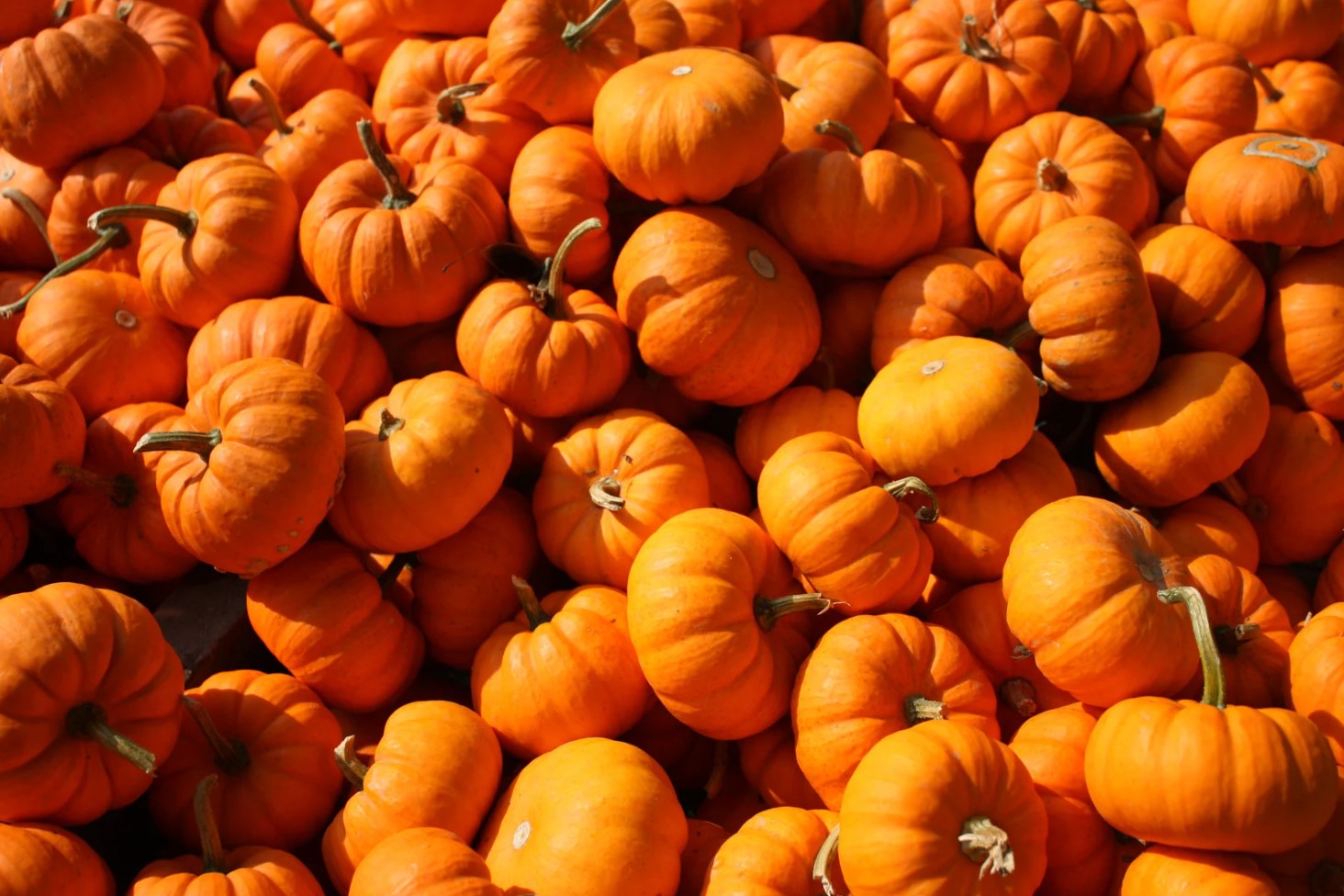
Medicinal Properties Of Pumpkin Seeds: Everything You Need To Know
When it comes to pumpkins, most of us immediately think of their use in carving jack-o-lanterns or in making pies during Thanksgiving. However, there’s one part of the pumpkin that is often overlooked and underrated – its seeds! Pumpkin seeds are packed with nutrients and health benefits that can make them an excellent addition to your diet. In this blog post, we’ll take a closer look at the medicinal properties of pumpkin seeds and what you need to know about incorporating them into your daily routine.
Nutritional Benefits: Let’s start by looking at the nutritional benefits of pumpkin seeds. These seeds are rich in protein, fiber, healthy fats, and essential minerals such as zinc, magnesium, and potassium. They also contain antioxidants like carotenoids and vitamin E, which can help to protect against cellular damage and reduce inflammation in the body.
- Protein: Pumpkin seeds are one of the best plant-based sources of protein. In fact, just a quarter cup of pumpkin seeds contains around 9 grams of protein.
- Fiber: Pumpkin seeds are a good source of both soluble and insoluble fiber, both of which are important for digestive health.
- Healthy Fats: Pumpkin seeds contain heart-healthy monounsaturated and polyunsaturated fats, including omega-3 fatty acids.
Health Benefits: Now that we’ve looked at the nutritional benefits, let’s explore some of the health benefits of pumpkin seeds.
- Helps to lower cholesterol: Several studies have found that consuming pumpkin seeds can help to lower LDL (bad) cholesterol levels in the body.
- May reduce the risk of certain cancers: Pumpkin seeds contain compounds called phytosterols, which have been shown to have anti-cancer effects in animal studies.
- Supports prostate health: Research suggests that pumpkin seeds may be particularly beneficial for men’s health. Some studies have found that consuming pumpkin seeds regularly can help to reduce the risk of prostate cancer and improve symptoms of benign prostatic hyperplasia (BPH).
How to Incorporate Pumpkin Seeds Into Your Diet: Pumpkin seeds are a versatile ingredient that can be used in a variety of dishes. Here are some simple ways to incorporate them into your daily routine:
| Recipe | How to Use Pumpkin Seeds |
|---|---|
| Pumpkin Seed Trail Mix | Mix pumpkin seeds with your favorite nuts and dried fruits for a healthy snack. |
| Pumpkin Seed Pesto | Replace pine nuts with pumpkin seeds in your favorite pesto recipe for an extra boost of nutrients. |
| Pumpkin Seed Granola | Add pumpkin seeds to your homemade granola mix for added crunch and nutrition. |
So there you have it – everything you need to know about the medicinal properties of pumpkin seeds. Whether you sprinkle them on top of your oatmeal or use them as a crispy coating for chicken, there are plenty of delicious ways to enjoy the health benefits of this underrated superfood.
Growing Your Own Pumpkins: A Beginner’s Guide
Have you ever wanted to try growing your own pumpkins? If so, you’re in luck! Pumpkins are a great vegetable to grow for beginners because they are easy to cultivate, and they provide a bountiful harvest. Plus, there’s nothing quite like being able to pick a large pumpkin straight from your own garden. Here are some tips on how to get started:
-
- Choose the right location
When selecting a spot to grow your pumpkins, make sure it gets plenty of sunlight and has well-draining soil. Ideally, you want a location with at least six hours of sunlight per day. If your soil is compacted or poorly drained, consider raised garden beds or adding compost to improve the soil quality.
-
- Select the proper seeds
Before you start planting, select the type of pumpkin you want to grow. There are many different varieties available, so do some research to find which one is best suited for your growing conditions. Choose seeds from a reputable source, and make sure they are fresh.
-
- Plant the seeds
Once you have your location and seeds, it’s time to start planting. Plant the seeds in a mound about an inch deep and four to five feet apart. Make sure to water them regularly, and be patient as they sprout. The ideal time to plant pumpkins is in late spring or early summer.
-
- Care for the plants
As your pumpkin plants grow, they’ll need plenty of care and attention. Make sure to water them regularly, especially during dry spells, and fertilize them with a balanced fertilizer once a month. Keep an eye out for pests and diseases, and take action if you notice any problems.
If you follow these simple tips, you’ll be well on your way to growing your own pumpkins in no time. With a little patience and care, you’ll be able to enjoy a bountiful harvest of these delicious and versatile vegetables.
Pumpkin İn Traditional Medicine: From Ancient Times To Modern Day
For centuries, pumpkin has been a staple in traditional medicine across many cultures. Its usage is documented in ancient texts, including Greek, Indian, and Chinese medical writings. The fruit of the pumpkin plant has been used to treat a variety of ailments, from digestive issues to skin conditions. In this blog post, we will explore the use of pumpkin in traditional medicine from ancient times to modern day.
One of the earliest mentions of pumpkin in traditional medicine can be found in Greek medical texts dating back to 1550 B.C. The Greeks used pumpkin to treat a variety of ailments, including gastrointestinal issues and inflammation. Similarly, pumpkin was also used in ancient Indian medicine, known as Ayurveda. Ayurvedic practitioners used pumpkin to strengthen the digestive system, increase energy levels and treat kidney problems.
- Another traditional use of pumpkin can be traced back to China.
- Chinese traditional medicine views pumpkin as a cooling food that can help to balance the body’s energy levels.
- Pumpkin was traditionally used in China to reduce inflammation and swelling, particularly in the joints.
In modern times, pumpkin has been the focus of several scientific studies investigating its potential medicinal properties. Many of these studies have focused on the potential role of pumpkin in managing diabetes. A study published in the journal Phytotherapy Research found that pumpkin extract improved insulin sensitivity and glucose tolerance in rats with type 2 diabetes.
Pumpkin has also been found to have a positive effect on the immune system. A study published in the journal Nutrients found that the beta-carotene in pumpkin can help to support immune function by reducing inflammation and oxidative stress in the body.
| Traditional use | Modern research |
|---|---|
| Used to treat digestive issues | Pumpkin extract improved insulin sensitivity and glucose tolerance in rats with type 2 diabetes. |
| Used to reduce inflammation and swelling | The beta-carotene in pumpkin can help to support immune function by reducing inflammation and oxidative stress in the body. |
| Used to strengthen the digestive system |
In conclusion, pumpkin has been used in traditional medicine for centuries, and modern research has begun to uncover the potential benefits of this versatile fruit. Whether you are using pumpkin to treat a specific ailment or simply enjoy its delicious flavor, there is no denying the long history and rich tradition of pumpkin in medicinal practices around the world.
Pumpkin Preserves And Jams: How To Make Them At Home
If you’re a fan of pumpkin and all things autumn, you’ll love the taste of homemade pumpkin preserves and jams! Making these delicious spreads at home is easier than you might think and can be a great way to use up any leftover pumpkin you have after carving or cooking. Plus, it’s a great way to preserve the flavor of the season for later enjoyment.
First things first: choose your pumpkin. When selecting a pumpkin for making preserves or jams, look for a variety that is high in sugar and has dense flesh. Sugar Pumpkins are a great choice as they are known for their dense, flavorful flesh that is perfect for baking and preserving. Once you’ve chosen your pumpkin, cut it into small pieces and remove the seeds and stringy bits in the center.
- Ingredients:
- 4 cups diced pumpkin
- 1 cup sugar
- 1 tsp. cinnamon
- 1/4 tsp. nutmeg
- 1/4 tsp. allspice
- 1/4 tsp. cloves
- 1/4 cup lemon juice
Next, prepare your ingredients. You will need sugar, cinnamon, nutmeg, allspice, cloves, and lemon juice. In a large saucepan, combine the diced pumpkin with the sugar, spices, and lemon juice. Cook over medium heat, stirring occasionally, until the mixture comes to a simmer.
After the mixture simmers, reduce the heat and let it cook for 20-30 minutes until the pumpkin has softened and the mixture has thickened. Be sure to stir the mixture occasionally to prevent sticking and burning. When the pumpkin has cooked down and the mixture has thickened, remove it from the heat and let it cool.
Finally, it’s time to can your pumpkin preserves or jam. Spoon the mixture into sterilized jars and seal them tight with lids. Place the jars in a large pot of boiling water, making sure the jars are completely covered with at least 1 inch of water. Boil for 20-25 minutes to ensure that the jars are properly sealed. Once the jars have cooled, store them in a cool, dark place.
| Use Your Homemade Pumpkin Preserves And Jams In These Delicious Ways: |
|---|
| – Spread on toast or muffins for a delicious breakfast treat. |
| – Use as a filling for pumpkin pie or turnovers. |
| – Mix with cream cheese for a delicious dip or topping for bagels. |
With these simple steps, you can make your own homemade pumpkin preserves or jams in no time. Not only will you have a delicious spread to enjoy all season long, but you’ll also be able to savor the taste of pumpkin long after the season has ended. So, get your canning supplies out and get ready to make some tasty memories!
The Ecological İmportance Of Pumpkins: How İt Benefits The Environment.
Pumpkins are not only delicious and healthy, but they also play an important role in our ecosystem. These large, orange fruits (yes, fruits!) have a great ecological impact that is often overlooked. In this blog post, we will explore the ecological importance of pumpkins and how they benefit our environment.
One of the ways pumpkins benefit the environment is through their ability to improve soil health. Pumpkins belong to the gourd family, which are known for their deep root systems. These roots help to break up compacted soil and increase water infiltration. Additionally, pumpkins are known to accumulate nutrients from the soil and then release them back into the soil when the fruit decomposes.
- Deep root systems help to break up compacted soil
- Increase water infiltration
- Accumulate nutrients from the soil and then release them back into the soil when the fruit decomposes
Pumpkins are also a valuable source of food for wildlife. As pumpkins decompose, they attract insects and other small animals, which then become food for larger predators. Additionally, many birds and small mammals will eat the seeds inside the pumpkin, helping to spread the plant’s genetic material further.
Finally, pumpkins are an important part of sustainable agriculture. As a crop that is relatively easy to grow and store, pumpkins provide a reliable source of food for families and communities. They also have a relatively low environmental impact, as they require minimal inputs such as fertilizer and pesticides.
| Pumpkins in Sustainable Agriculture | Pumpkins as Food for Wildlife | Pumpkins Improving Soil Health |
|---|---|---|
| Reliable source of food for families and communities | Decomposing pumpkins attract insects and animals, which become food for larger predators | Deep roots break up compacted soil, increase water infiltration, and accumulate nutrients that are released back into the soil during decomposition |
| Relatively easy to grow and store | Seeds inside pumpkins are eaten by birds and small animals, spreading the plant’s genetic material | Low environmental impact, requiring minimal inputs such as fertilizer and pesticides |
Overall, pumpkins are a unique and valuable crop that provides a range of ecological benefits. From improving soil health to providing food for wildlife, pumpkins play an important role in our environment. As we continue to explore ways to create more sustainable and resilient agricultural systems, pumpkins will undoubtedly play an important role in our future.